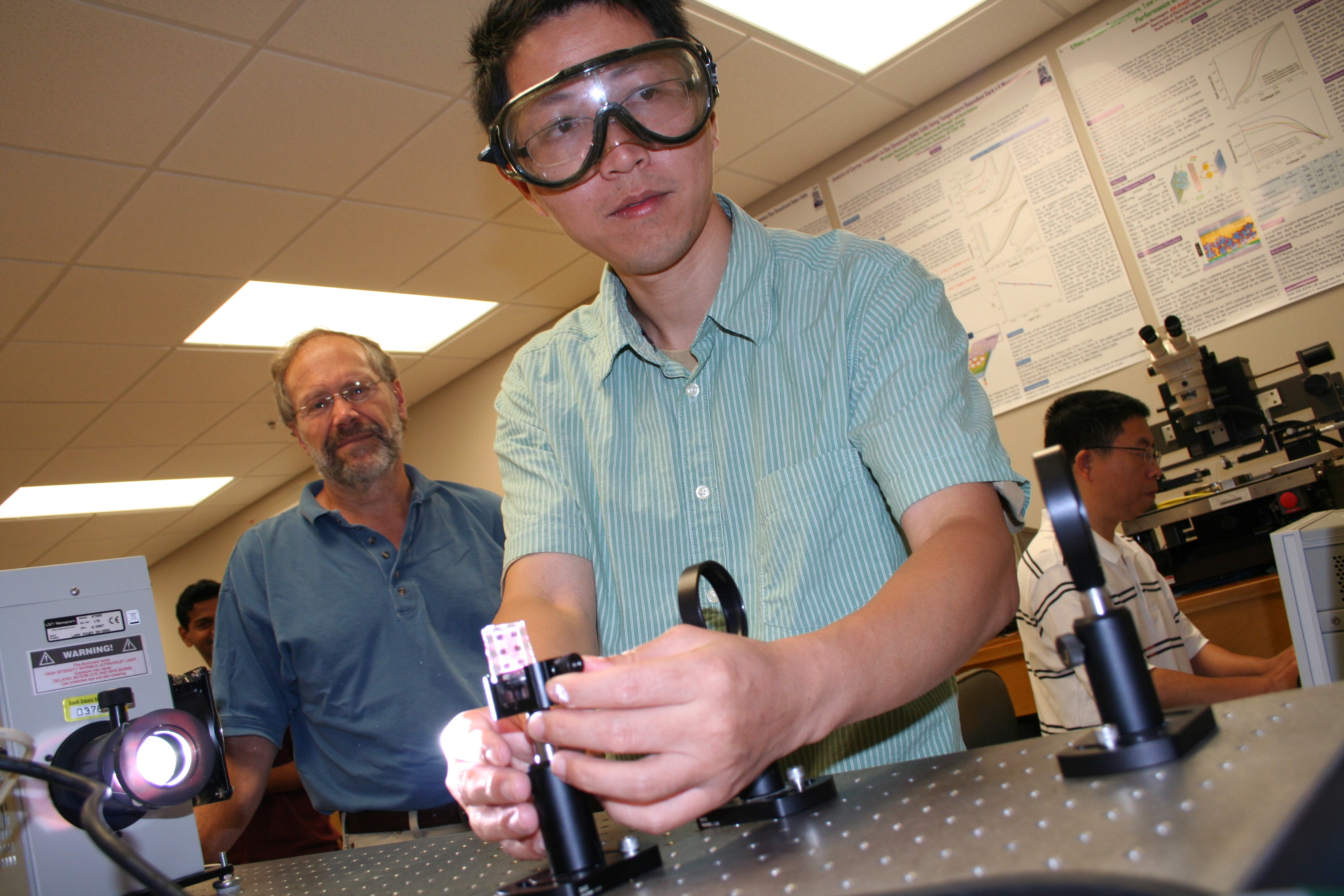Solar Cell Technologies

Inventors: Qiquan Qiao, XingZhong Yan, David Galipeau
Article and Photo by Lance Nixon
South Dakota scientists are participating in two research projects for NASA.
Both projects could find applications on space missions, said professor David Galipeau in South Dakota State University’s Department of Electrical Engineering and Computer Science.
Here’s a closer look:
South Dakota School of Mines & Technology associate professor Steve Smith leads a $750,000 project to develop an advanced photovoltaic materials research cluster in South Dakota. Assistant professors Phil Ahrenkiel and Zhengtao Zhu at the School of Mines are also members of the research cluster. At SDSU, the project includes assistant professor Qiquan Qiao, who is the SDSU lead for the project, along with assistant professor XingZhong Yan and professor David Galipeau.
The scientists will focus on materials and device concepts for next-generation solar cells.
South Dakota already has a photovoltaics research cluster, or group of collaborating scientists working on technologies to convert sunlight to electricity. But this new group will focus on the National Aeronautics and Space Administration’s needs.
“This grant is allowing us to form a more focused sub-research group which concentrates on NASA applications,” Galipeau said.
The research is in some ways a new direction for SDSU researchers.
“To this point we have been focusing on cost-effective materials. NASA is more concerned with light-weight, high-efficiency photovoltaics,” Qiao explains.
Specifically, the South Dakota project will develop what are called “intermediate band-gap materials,” then use those materials in a new high-efficiency photovoltaic device that could generate power in space, Yan explains. One important aspect of the work is that it will focus on organic, or carbon-based, polymers that are much lighter than inorganic conductors such as silicon.
“NASA cares about the total power available from a given volume that they have to put into orbit,” Galipeau said. “It has to be efficient and it has to be light. Right now, polymer cells are light, but they’re not efficient. We’re looking at increasing the efficiency of polymer cells so that they’re competitive with silicon. The basic idea is to be able to generate more electricity for a given volume than photovoltaics are doing today.”
South Dakota School of Mines & Technology research scientist Haiping Hong leads a separate research project, also funded at $750,000, to improve thermal management systems using advanced materials and fluids. Also involved in the project are School of Mines professors Jan Puszynski and Wayne Krause, and SDSU assistant professor XingZhong Yan.
The researchers plan to use nanoparticle-based structures. One aspect of the South Dakota project is that it will incorporate magnetic materials into the nanostructure. Yan’s role in the project will be to use a powerful magnetic field to align the nanostructure for greater efficiency.